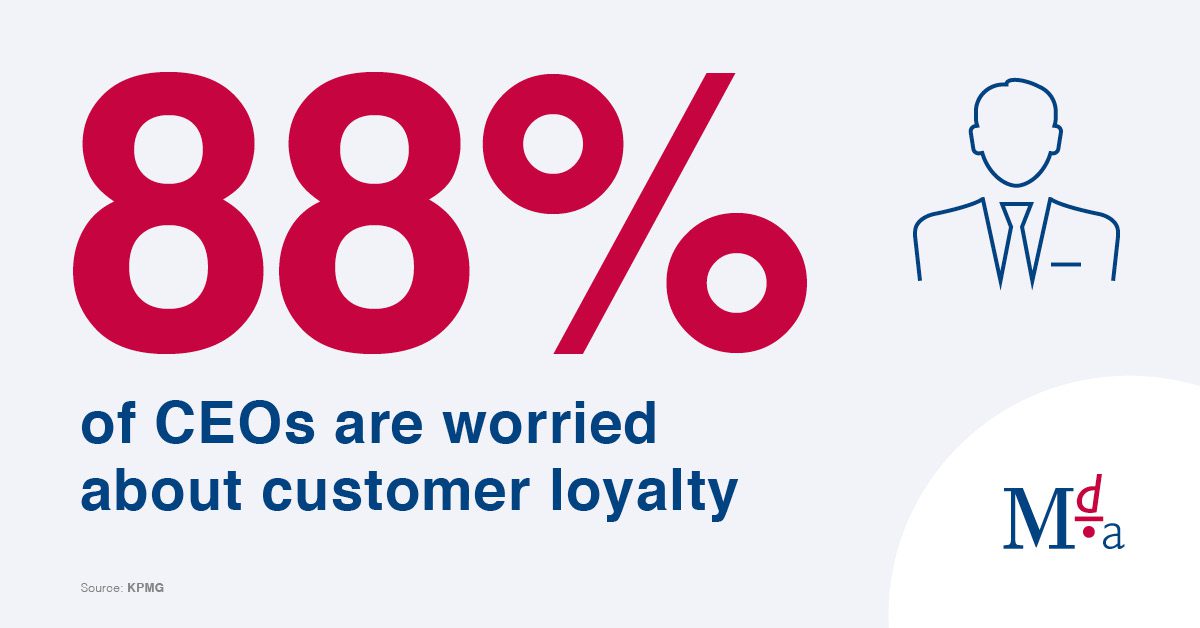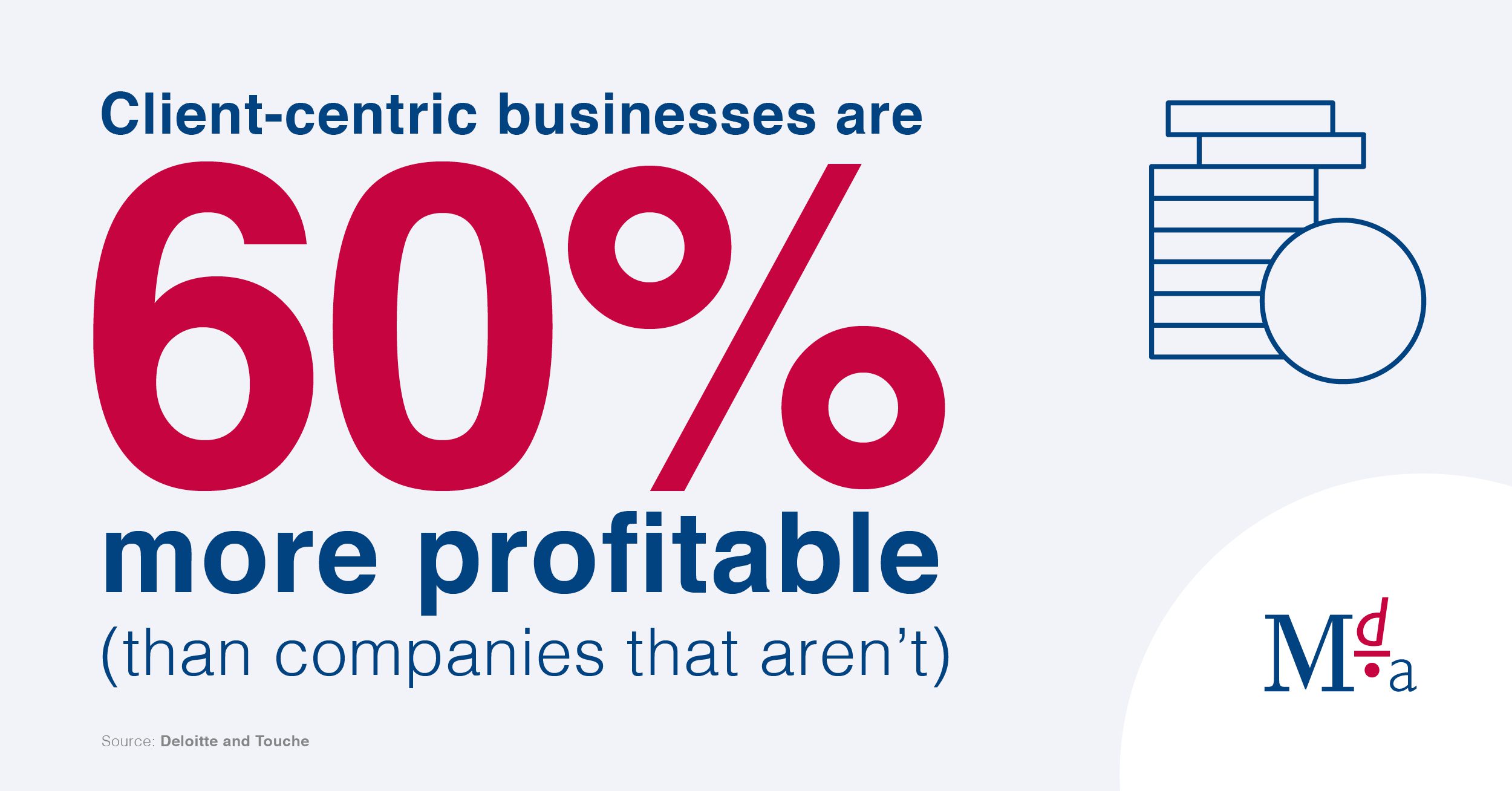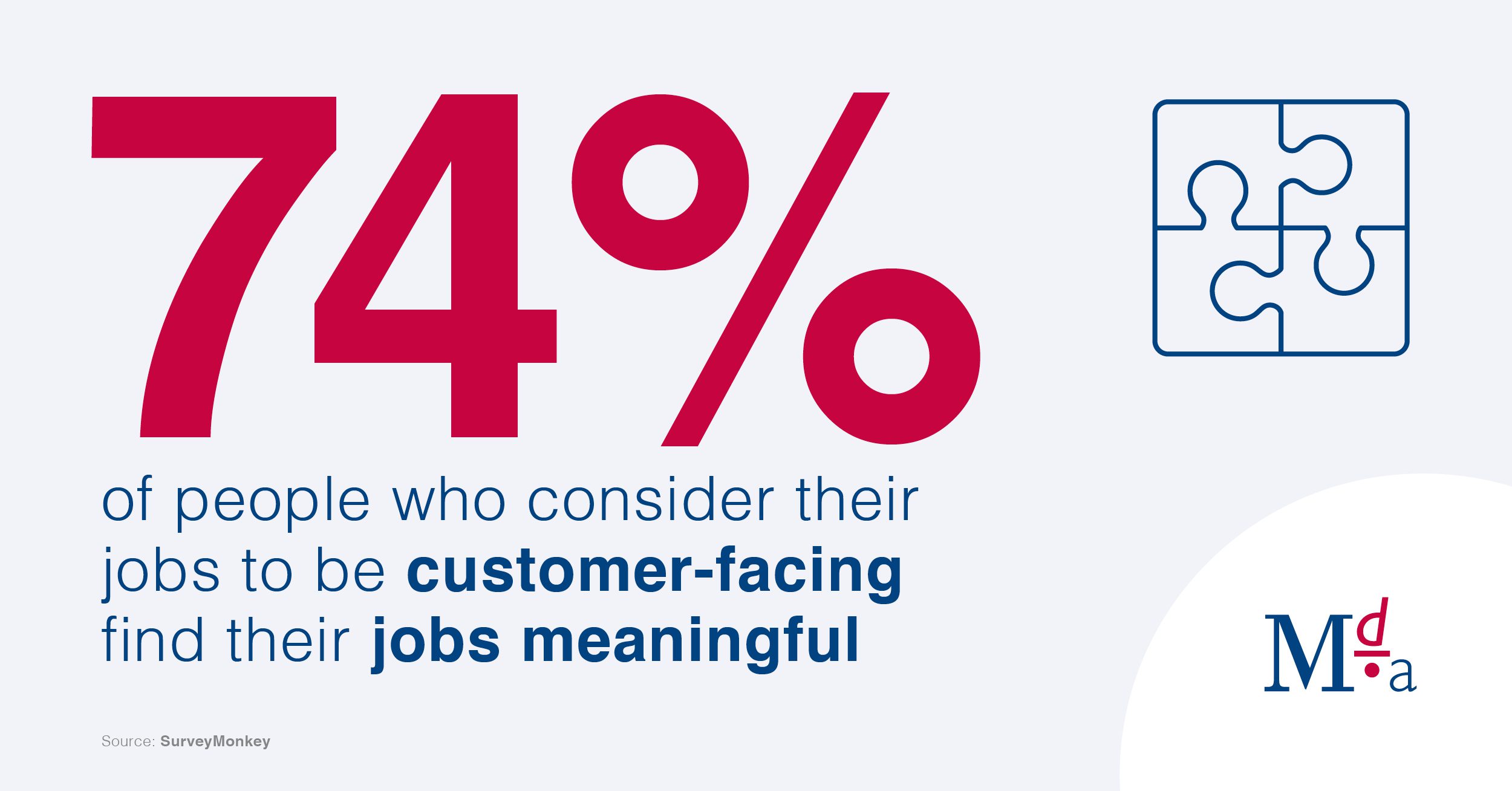Every business needs clients or customers.
This is a fact that has become all the more relevant in a year plighted by a pandemic. With this in mind, it’s no surprise that COVID-19 has forced the hand of many businesses, with many now embracing client-centricity.
Client-centricity (which is also known as customer-centricity) revolves around putting clients first, Adopting this particular approach will put the needs of your customers first, to and can help secure long-term relationships that will outlive the pandemic (and more).
This has, in turn, led to a seismic shift in strategy for many organisations. Several organisations have opted to adopt a client-centric approach: the process of repositioning the customer as the heart of the business, to maintain relevance, improve customer experience, and also preserve the wellbeing of staff.
It’s understandable if you’re hesitant about embracing client-centricity. Nevertheless, we have compiled five critical statistics about client-centricity to help convince you otherwise:
88% of CEOs are worried about customer loyalty – KPMG

Customer loyalty is a problem that affects more than the workforce. A recent KPMG study revealed that over 80% of CEOs were concerned about the loyalty of their customers; with the main worries stemming from the relevance of products and services. 45% of CEOs also believed that increasing investment in digital would help improve customer relationships (and, in turn, embracing client-centricity).
Client-centricity is vital for businesses wanting to stay relevant in an increasingly digital world. And, with the emergence of customer-first firms in all major sectors (including banking and insurance), traditional players will need to up the ante, if they want to guarantee customer retention when the pandemic is over.
Client-centric businesses are 60% more profitable (than companies that aren’t) – Deloitte and Touche

A study from Deloitte and Touche in July 2017 revealed that businesses that adopt client-centricity are 60% more profitable than their counterparts. A key component of client-centricity is being able to provide a positive client experience along every step of the customer journey.
Adopting a client-centric approach can help create a culture within the organisation that best reflects the needs of the customer. By curating a near 360-degree customer view, the workforce will be able to anticipate the needs of its customers, thus establishing the relationships we have already discussed.
Poor customer service costs UK businesses £37billion – Ombudsman Services

We’ve talked about the price of poor customer service in the past. In 2017, Ombudsman Services found that UK businesses lost around £37bn every year, as a result of subpar customer service.
Lousy customer service isn’t just a historical issue, either. In 2019, the annual Consumer Action Monitor report by Ombudsman Services revealed that 19% of consumers no longer have faith in businesses at all. Without client-centricity, not only do companies risk losing the loyalty of customers, but they will have potentially lost out on a client for life.
Companies that excel at customer experience have 1.5x more engaged employees – Frost & Sullivan

Adopting a client-centric strategy doesn’t only benefit the customer; it also has a positive impact on the wellbeing of the workforce.
According to Frost & Sullivan, companies that excel at customer service have 1.5x more engaged employees, accounting for 79% of all employees. When you compare that to only 49% of employees at companies with average, or below-average customer experience scores, it’s easy to see how a client-centric strategy can influence the success of a business.
74% of people who consider their jobs to be customer-facing find their jobs meaningful – SurveyMonkey

A study conducted by SurveyMonkey revealed that over 70% of people who worked in a customer-serving role found their job meaningful, when the company implemented a client-centric approach. This is also attributed to the culture within the business. Typically, employees at organisations that put clients first are also specifically more likely to feel like their work has meaning, thus increasing their time at the business.
Organisations should be optimising the client-centric culture within the business, and prioritising new hires based on that culture. Thankfully, client-centricity is a skill that can be learnt and optimised within the workforce, too.
Operational learning programmes offered by MDA Training
Since the onset of the pandemic at the beginning of the year, we have been able to revolutionise our offering of traditional training programmes.
Where the past would have called for face-to-face training sessions for the workforce, we have become pioneers in virtual training offerings. One of the key ways we provide this is through simulations.
Our ‘Client Centricity’ simulation builder allows you to create a programme based on your business’ values and standards. With over thirty years of experience in training across many industries – including banking, insurance, and manufacturing – we’re able to design and deliver an experiential, simulation-based programme to best suit the needs of the business.
For more of an insight into how our client-centricity simulation builder works, check out this video demonstration:
How important is it to be “client-centric”?
The phrase “the customer is always right” has been bandied around for decades, but its relevance seems especially appropriate in 2020. As the statistics above prove, client-centricity is clearly essential. And, while client-centricity isn’t a new approach to business, it is becoming a vital element of the modern workplace.
Placing the client at the heart of an organisation’s operations can benefit the business massively. Not only can it play a part in overhauling the workplace culture (to one that better suits the needs of the client), but it can also help align technologies and processes in-line with the client’s specific needs.
















